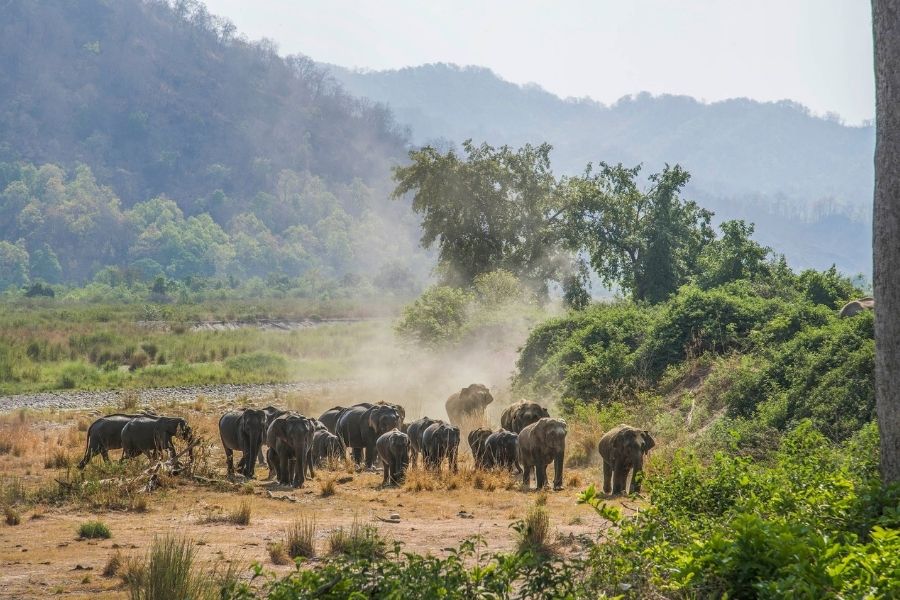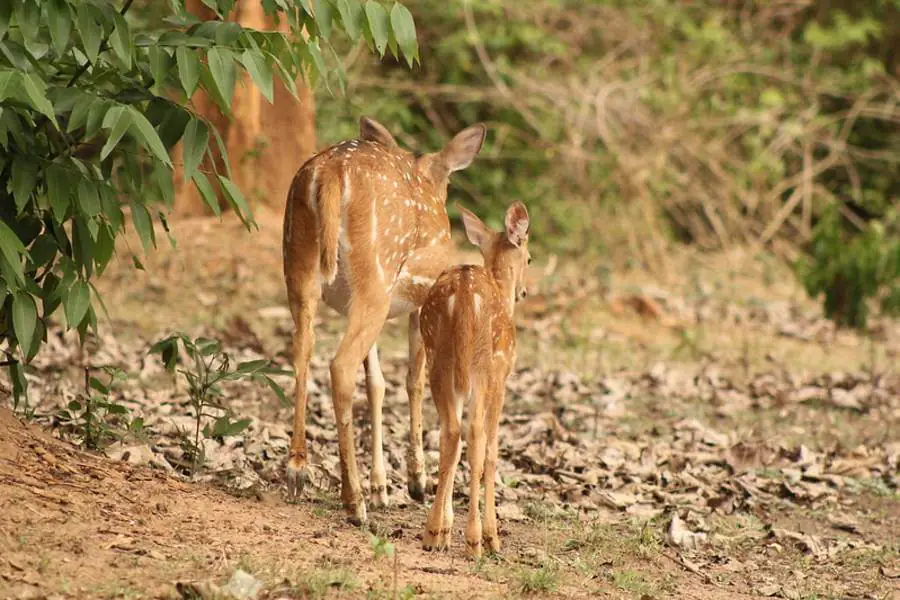Jeep Safari in India – Top Jeep Safari Destinations, How to Prepare

India’s vast and diverse landscape makes it one of the most captivating countries in the world for nature and wildlife enthusiasts. Among the various ways to explore its wild terrains, Jeep safaris stand out as an exhilarating and immersive experience. Whether you’re navigating the dense jungles in search of the elusive Bengal tiger or cruising through the arid deserts to witness a mesmerizing sunset, Jeep safaris in India offer a thrilling adventure that leaves a lasting impression.
In this comprehensive guide, we’ll dive deep into everything you need to know about Jeep safaris in India, including top destinations, wildlife encounters, safari experiences, and tips to make the most of your journey.
1. Introduction to Jeep Safari in India
A Jeep safari in India is not just a tour; it’s an adventure that takes you deep into the country’s most remote and wild regions. Unlike traditional safaris, where you might be confined to a specific path or route, Jeep safaris offer the flexibility to explore a variety of terrains, including forests, deserts, grasslands, and hills. The thrill of riding in an open-top 4×4 vehicle, with the wind in your hair and the wilderness all around, is unparalleled.
India’s rich biodiversity, from its majestic Bengal tigers to the elusive snow leopards and the magnificent elephants, makes it a haven for wildlife enthusiasts. Jeep safaris allow you to get up close and personal with these creatures, all while soaking in the natural beauty of the surroundings.
2. Top Jeep Safari Destinations in India
India is home to several national parks and wildlife sanctuaries that offer exceptional Jeep safari experiences. Here are the top destinations you should consider:
Ranthambore National Park, Rajasthan

Ranthambore National Park is one of the most popular destinations for Jeep safaris in India. Located in the Sawai Madhopur district of Rajasthan, this park is renowned for its population of Bengal tigers. The rugged terrain, dotted with ancient ruins and a picturesque fort, provides a dramatic backdrop for your safari. Besides tigers, you can also spot leopards, sloth bears, and a variety of deer species.
- Best Time to Visit: October to June
- Safari Zones: 10 zones, with Zone 1-5 being the most popular for tiger sightings.
Jim Corbett National Park, Uttarakhand

As India’s oldest national park, Jim Corbett is a must-visit for anyone looking to experience the thrill of a Jeep safari. Located in the foothills of the Himalayas, the park’s diverse landscape includes dense forests, grasslands, and rivers. It is famous for its population of Bengal tigers, as well as elephants, leopards, and a variety of bird species.
- Best Time to Visit: November to June
- Safari Zones: Bijrani, Jhirna, Dhikala, Durgadevi, and Dhela.
Kaziranga National Park, Assam

Kaziranga National Park, a UNESCO World Heritage Site, is best known for its population of one-horned rhinoceroses. The park’s terrain includes tall elephant grass, marshland, and dense tropical forests. A Jeep safari here offers a chance to see not only rhinos but also elephants, wild water buffalo, and a variety of bird species.
- Best Time to Visit: November to April
- Safari Zones: Central, Western, Eastern, and Burapahar.
Bandhavgarh National Park, Madhya Pradesh

Bandhavgarh National Park is renowned for having one of the highest densities of tigers in India. The park’s varied landscape, which includes rocky hills, dense forests, and open grasslands, makes it an ideal location for a Jeep safari. In addition to tigers, you may also encounter leopards, deer, and a rich birdlife.
- Best Time to Visit: October to June
- Safari Zones: Tala, Magadhi, Khitauli, and Panpatha.
Sundarbans National Park, West Bengal

The Sundarbans, a UNESCO World Heritage Site, offers a unique Jeep safari experience in its mangrove forests. While the park is more famous for its boat safaris, Jeep safaris are also available in the buffer zones. The Sundarbans are home to the elusive Royal Bengal tiger, as well as saltwater crocodiles, spotted deer, and a variety of bird species.
- Best Time to Visit: September to March
- Safari Zones: Sajnekhali, Sudhanyakhali, and Dobanki.
Desert Safari in Rajasthan

For a completely different experience, consider a Jeep safari in the Thar Desert of Rajasthan. The golden sand dunes, rugged landscapes, and remote villages offer a thrilling adventure. Popular destinations for desert safaris include Jaisalmer and Bikaner, where you can also experience cultural performances and traditional Rajasthani hospitality.
- Best Time to Visit: October to March
- Key Highlights: Sand dune bashing, village visits, and camel rides.
Nagarhole National Park, Karnataka

Nagarhole National Park, also known as Rajiv Gandhi National Park, is part of the Nilgiri Biosphere Reserve. The park is famous for its population of Asian elephants, tigers, and leopards. A Jeep safari here takes you through dense forests, open meadows, and along the banks of the Kabini River, offering breathtaking views and wildlife encounters.
- Best Time to Visit: October to May
- Safari Zones: Kabini and Nagarhole.
Gir National Park, Gujarat

Gir National Park is the last refuge of the Asiatic lion, making it a unique destination for a Jeep safari. Located in Gujarat, the park’s dry deciduous forests and grasslands are home to lions, leopards, and a variety of other wildlife. The park’s conservation efforts have successfully increased the lion population, offering visitors a greater chance of spotting these majestic animals.
- Best Time to Visit: December to April
- Safari Zones: Gir Jungle Trail, Gir Interpretation Zone, and Devaliya Safari Park.
Tadoba Andhari Tiger Reserve, Maharashtra

Tadoba Andhari Tiger Reserve, located in Maharashtra, is one of the oldest and largest national parks in the state. Known for its thriving tiger population, Tadoba’s landscape includes dense forests, bamboo groves, and meadows. Jeep safaris here are popular for tiger sightings, as well as encounters with leopards, wild dogs, and sloth bears.
- Best Time to Visit: October to June
- Safari Zones: Moharli, Tadoba, and Kolsa.
Pench National Park, Madhya Pradesh

Pench National Park, which inspired Rudyard Kipling’s “The Jungle Book,” offers a magical Jeep safari experience. The park’s rich biodiversity includes tigers, leopards, wild boars, and a variety of deer species. The scenic landscape, with its mix of forests and open grasslands, provides ample opportunities for wildlife sightings.
- Best Time to Visit: October to June
- Safari Zones: Turia, Karmajhiri, and Jamtara.
3. Unique Wildlife Encounters on a Jeep Safari
Jeep safaris in India provide the opportunity to encounter some of the world’s most incredible wildlife in their natural habitat. Here are some of the key species you might encounter:
- Bengal Tigers: The main attraction in many national parks, especially in Ranthambore, Bandhavgarh, and Jim Corbett.
- Asiatic Lions: Only found in Gir National Park, these lions are a symbol of India’s wildlife conservation efforts.
- One-Horned Rhinoceros: Kaziranga National Park is home to the largest population of these majestic creatures.
- Leopards: Often seen in Bandhavgarh, Nagarhole, and Tadoba.
- Elephants: Commonly found in Nagarhole, Jim Corbett, and Kaziranga.
- Birds: India’s national parks are a birdwatcher’s paradise, with species like the Great Indian Hornbill, Crested Serpent Eagle, and various waterfowl.
4. What to Expect During a Jeep Safari
Types of Vehicles Used
Jeep safaris in India typically use open-top 4×4 vehicles like Gypsies or modified Jeeps. These vehicles are designed to handle rough terrains and offer unobstructed views, making them ideal for wildlife viewing and photography.
Safari Timings
Most Jeep safaris operate twice daily – early in the morning and late in the afternoon. The timing is crucial as wildlife is most active during these cooler parts of the day. Morning safaris often start around sunrise, while afternoon safaris begin around 2:30 to 3:00 PM.
Expert Guides and Naturalists
Each safari is accompanied by an expert guide or naturalist who is well-versed in the local flora and fauna. Their knowledge and experience greatly enhance the safari experience, helping you spot and understand the behavior of wildlife.
Safety Measures and Protocols
Safety is a top priority during Jeep safaris. Strict rules are followed, including staying inside the vehicle at all times, maintaining a safe distance from animals, and not making loud noises that could disturb the wildlife.
5. How to Prepare for Your Jeep Safari
Essential Items to Pack
- Binoculars: Essential for spotting wildlife from a distance.
- Camera: A good DSLR with a telephoto lens is recommended for wildlife photography.
- Sun Protection: Hats, sunglasses, and sunscreen are crucial for daytime safaris.
- Insect Repellent: To protect against mosquitoes and other insects.
- Water Bottle: Staying hydrated is important, especially during hot weather.
Best Time to Visit
The best time to go on a Jeep safari in India is usually between October and June, depending on the region. The monsoon season (July to September) is generally avoided as many parks are closed due to heavy rains.
Clothing and Gear Recommendations
- Light, Earth-Toned Clothing: Helps you blend in with the environment and avoid attracting unnecessary attention from wildlife.
- Comfortable Footwear: Essential for walking around campsites or during short treks.
- Layered Clothing: Mornings can be chilly, especially in winter, so it’s advisable to wear layers that can be removed as the day warms up.
6. Insider Tips for a Successful Jeep Safari
Respecting the Environment and Wildlife
Always remember that you are a visitor in the animals’ natural habitat. Avoid littering, keep noise levels down, and follow the guide’s instructions carefully.
Maximizing Wildlife Sightings
Patience is key to a successful safari. Wildlife sightings can be unpredictable, so it’s important to remain quiet and observant. Early morning safaris often yield the best results.
Photography Tips for Capturing Stunning Moments
- Use the Right Lens: A telephoto lens (200mm or more) is ideal for capturing wildlife from a distance.
- Shoot in Burst Mode: This increases your chances of capturing that perfect moment, especially with fast-moving animals.
- Focus on the Eyes: Sharp, in-focus eyes make wildlife photos more engaging and powerful.
7. The Ethical Side of Jeep Safaris: Responsible Tourism Practices
Responsible tourism is crucial to preserving India’s wildlife and natural habitats. When participating in a Jeep safari, choose operators who adhere to ethical practices, such as limiting the number of vehicles per zone, following designated routes, and avoiding off-road driving that can harm the environment.
Supporting conservation efforts, such as local community projects and anti-poaching initiatives, also contributes to the sustainability of these natural wonders.
8. Conclusion: The Unforgettable Experience of a Jeep Safari
A Jeep safari in India is more than just a wildlife adventure – it’s a journey into the heart of the country’s diverse and stunning landscapes. Whether you’re a seasoned traveler or a first-time visitor, the thrill of spotting a tiger in the wild or watching a herd of elephants cross your path is an experience that stays with you forever.
From the dense jungles of Madhya Pradesh to the open grasslands of Assam, each safari offers a unique glimpse into India’s incredible biodiversity. So, pack your bags, grab your camera, and get ready to embark on an unforgettable Jeep safari in India.
9. FAQs
Q1: Are Jeep safaris safe for children?
A1: Yes, Jeep safaris are generally safe for children, but it’s advisable to check with the safari operator regarding age restrictions and safety measures.
Q2: Can I book a private Jeep for the safari?
A2: Yes, many parks offer the option to book a private Jeep for a more personalized experience.
Q3: How do I book a Jeep safari in India?
A3: You can book a Jeep safari through the official website of the national park or through authorized tour operators. It’s recommended to book well in advance, especially during peak season.


